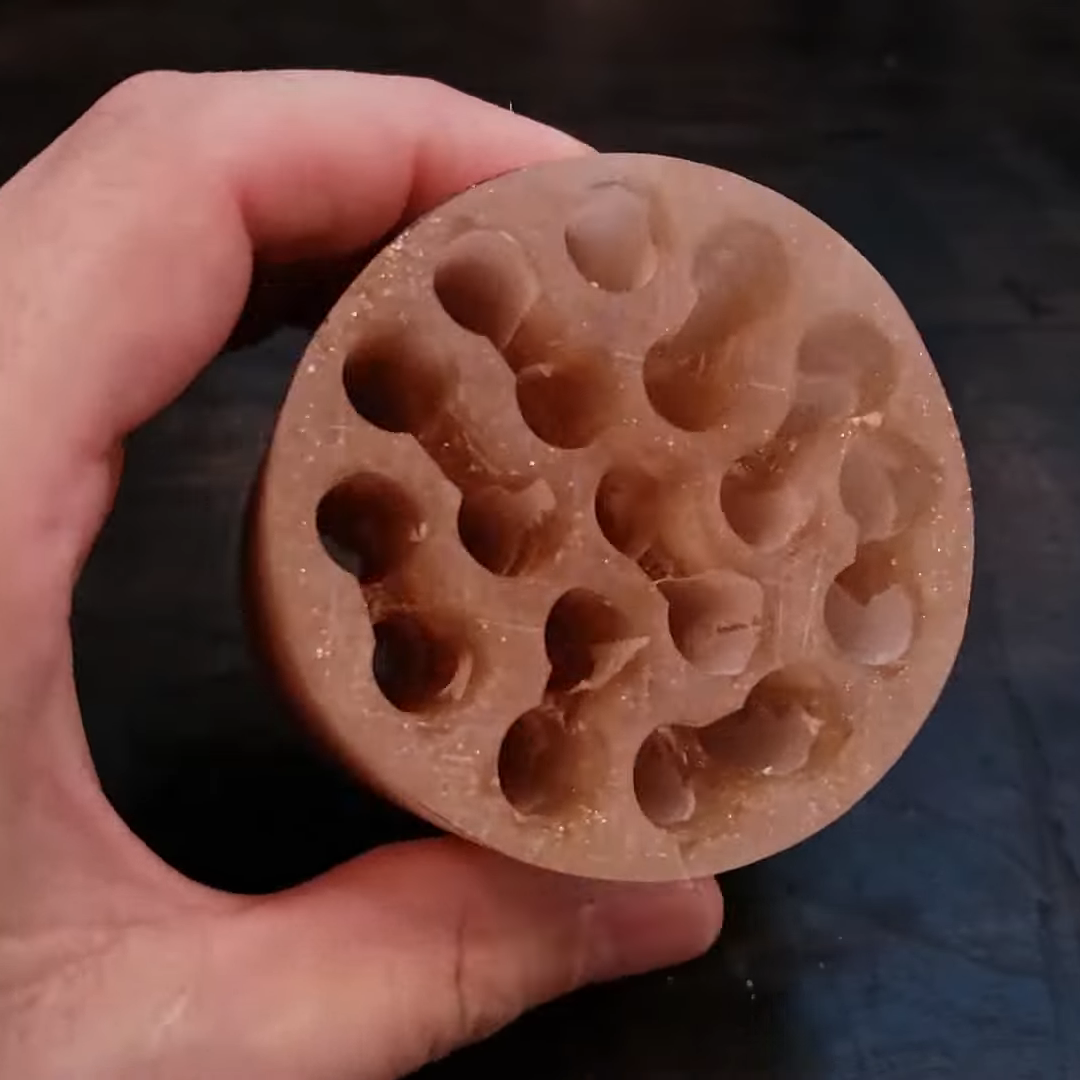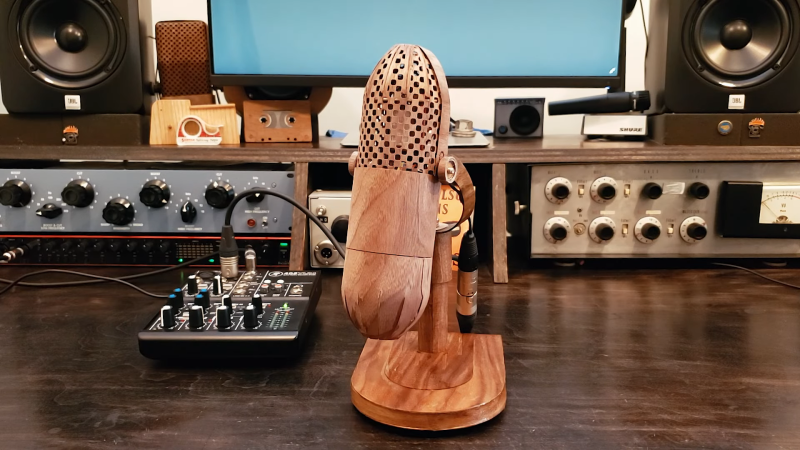It used to be that when we featured one of [Frank Olson]’s DIY ribbon microphone builds, it was natural to focus on the fact that he was building them almost exclusively from wood. But despite how counterintuitive it may seem, and for as many comments as we get that his microphones shouldn’t work without metal in the ribbon motors, microphones like this wooden RCA Model 77 reproduction both look and sound great.
 But ironically, this homage features a critical piece that’s actually not made of wood. The 77’s pickup pattern was cardioid, making for a directional mic that picked up sound best from the front, thanks to an acoustic labyrinth that increased the path length for incoming sound waves. [Frank]’s labyrinth was made from epoxy resin poured into a mold made from heavy paper, creating a cylinder with multiple parallel tunnels. The tops and bottoms of adjacent tunnels were connected together, creating an acoustic path over a meter long. The ribbon motor, as close to a duplicate of the original as possible using wood, sits atop the labyrinth block’s output underneath a wood veneer shell that does its best to imitate the classic pill-shaped windscreen of the original. The video below, which of course was narrated using the mic, shows its construction in detail.
But ironically, this homage features a critical piece that’s actually not made of wood. The 77’s pickup pattern was cardioid, making for a directional mic that picked up sound best from the front, thanks to an acoustic labyrinth that increased the path length for incoming sound waves. [Frank]’s labyrinth was made from epoxy resin poured into a mold made from heavy paper, creating a cylinder with multiple parallel tunnels. The tops and bottoms of adjacent tunnels were connected together, creating an acoustic path over a meter long. The ribbon motor, as close to a duplicate of the original as possible using wood, sits atop the labyrinth block’s output underneath a wood veneer shell that does its best to imitate the classic pill-shaped windscreen of the original. The video below, which of course was narrated using the mic, shows its construction in detail.
If you want to check out [Frank]’s other wooden microphones, and you should, check out the beautiful Model 44 replica that looks ready for [Sinatra], or the Bk-5-like mics he whipped up for drum kit recording.















Trypophobia warning, please! *cringe*
How are you supposed to warn about something you didn’t even know exists? ;-)
https://en.wikipedia.org/wiki/Trypophobia (don’t open it if you have that phobia)
Yeah, the picture of that lotus seed head is kinda creepy and you don’t even need to mention “Cordylobia anthropophaga” but I’m glad that’s as far as my “Trypophobia” goes (I assume both examples are actually explainable with an evolutionary fear).
you should automatically know everyone’s issues…it’s 2022 after all
/s
Was the epoxy required for density (can’t watch video with audio at the moment)? With the post-machining needed anyway for the labyrinth path completion, it seems like it could have been made of wood via drilling the holes.
Why would you build a microphone out of a material known for its resonance? Wouldn’t you want something as neutral to sound as possible. Wood is used to make musical instruments specifically for its resonant qualities. Microphones normally try NOT to change the sound they are supposed to capture.
That’s only really true for measurement mics. Most other microphones aren’t aiming for the flattest possible response, and will definitely add their own influence to the sound.
Wood is used to make musical instruments because it’s cheap and easy to work with. You can make a guitar out of anything with the tensile and compressive strength to hold the tension of the strings. Resonance is about design, not material. Sure, on an acoustic guitar the material it’s made out of does change the sound slightly, but wood isn’t a magical material that turns anything into an acoustically boosted sound machine.
I’ve personally seen acoustic guitar bodies welded out of stainless steel, and believe me whenever I tell you buddy, a stainless steel acoustic guitar is a lot louder than a wood one. Steel guitars were actually invented to boost sound volume in a pre-amplification era.